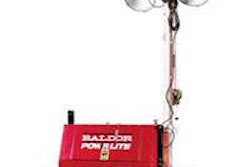 [email protected]
[email protected]
We all talk about economizing, about eliminating waste, and about getting more value for every dollar spent. We all talk about these things when we talk about government spending, and often when we discuss corporate spending, such as the so-called bonus programs of giant financial institutions.
But sometimes, when the ball is in our court, when it’s our turn to step forward and deliver the highest value to the public, it turns out to be not so easy.
This was one of the thoughts I had after reading about the National Center for Asphalt Technology’s (NCAT) tests that established a new, higher structural coefficient value for the state of Alabama’s asphalt mixes.
In case you missed the story here in Better Roads (see the December 2009 and January 2010 “Road Science” section), the Alabama Department of Transportation underwrote the tests to see if the structural number in the widely used AASHTO Guide for Design of Pavement Structures was still valid. That number, which is used to calculate the thickness of an asphalt pavement relative to the anticipated loads, is based on road tests conducted a half-century ago.
The NCAT tests discovered that for the range of mixes used in Alabama, a structural coefficient of 0.54 is in order, a substantial upgrade from the widely used value of 0.44.
So, first of all, congratulations to the Alabama DOT for taking the initiative. As a result of this research, their state will be 18.5 percent more cost efficient in asphalt road construction than they were before. That is how much the state will save by building pavements that meet, but don’t exceed, the required load capacity.
Second, why did this take so long to happen?
Everyone in the road industry is aware of the wholesale upgrades in asphalt pavement technology ushered in by the age of Superpave: Polymer-modified, performance-graded asphalt cement. New standards for aggregate. Improved technology for placing and compacting mix. The list goes on and on.
Of course, many pavement engineers in the road agencies knew that modern asphalt was better than the mixes we were using 50 years ago. They knew it intuitively, and it has been a topic of conversation in the industry for years, especially since asphalt industry groups began pushing the point in hopes of lowering the cost of asphalt roads and gaining more market share in their competition with concrete.
I still recall attending a demonstration project for a full-depth asphalt road early in this decade that featured an unbelievably deep pavement, with every lift using a Superpave or stone-matrix asphalt mix, even the base. From a journalist’s point of view, it was awesome, like watching the construction of a Roman road that would last for generations. However, from the taxpayer point of view, the project involved millions of dollars of overkill and every pavement engineer there knew it.
So, why has it taken so long for agencies to re-evaluate the structural number for asphalt?
I suppose there are several reasons, but primary among them is a combination of inertia and safety: It’s always easier to keep doing what we’ve been doing, especially when the pavements perform well. It’s also safer: if you reduce the slab size and experience a failure, even if the failure is due to bad drainage or poor workmanship or some other unrelated factor, you run the risk of taking the blame for building a cheaper road.
We’re getting movement on the issue now because there is an industry-wide need to get more for the pavement dollar.
Necessity, it turns out, is the mother of economy as well as invention.v











